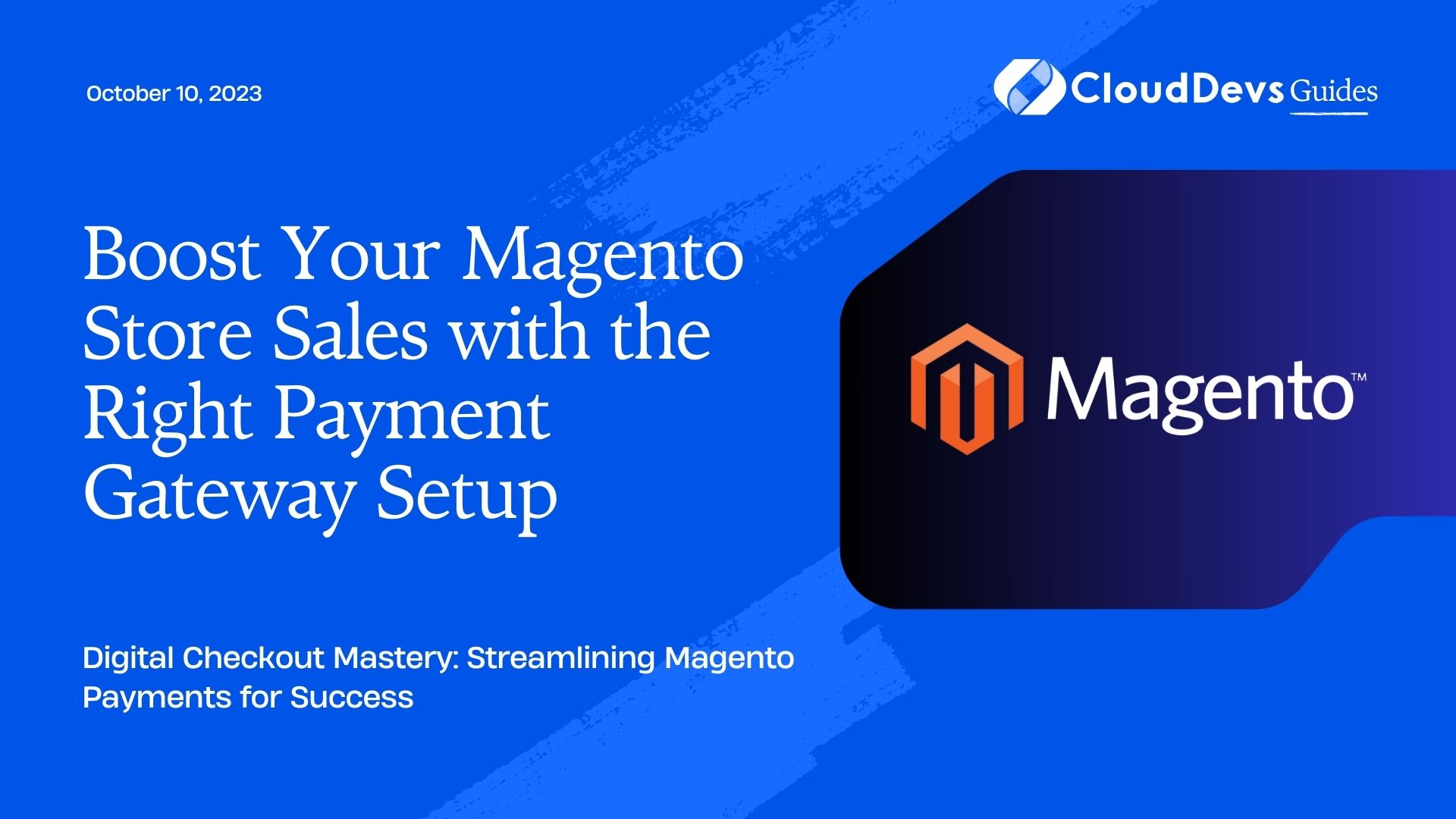Boost Your Magento Store Sales with the Right Payment Gateway Setup
Magento, one of the most popular eCommerce platforms in the world, offers merchants a scalable and customizable solution for their online stores. While Magento provides many out-of-the-box features, the need to accept online payments mandates the integration of a payment gateway. In this article, we will discuss how to integrate a payment gateway with Magento and highlight some examples to get you started.
Why is Payment Gateway Integration Important?
Before we delve into the mechanics, it’s essential to understand why payment gateway integration is crucial.
- Secure Transactions: Payment gateways provide a safe environment for the processing of sensitive information such as credit card details.
- Expanded Payment Options: Integrating multiple gateways allows businesses to accept a variety of payment methods from around the world.
- Enhanced User Experience: A seamless payment process can increase customer confidence, reduce cart abandonment, and thereby boost sales.
General Steps for Payment Gateway Integration in Magento:
- Choose the Payment Gateway: Before you can integrate, decide on which payment gateway suits your business needs. Consider factors like transaction fees, supported countries, and user experience.
- Get the API Credentials: Once you’ve selected a gateway, sign up with them and obtain the necessary API keys or credentials.
- Install and Configure the Extension: Magento’s vast marketplace likely has a pre-built extension for your chosen gateway. Install this extension and configure it with your API credentials.
- Test the Integration: Always ensure to run tests (often provided by the gateway provider) to ensure everything works correctly.
- Go Live: Once you’re satisfied with the setup, take it live!
Examples of Magento Payment Gateway Integration:
1. PayPal
Steps:
- Installation: Magento has built-in support for PayPal. Navigate to `Stores` -> `Configuration` -> `Sales` -> `Payment Methods` in your Magento backend.
- Configuration: Choose the appropriate PayPal method (e.g., Express Checkout) and fill in your API credentials which include the username, password, and signature provided by PayPal.
- Testing: Use PayPal’s sandbox mode to test the integration.
- Activation: Once testing is complete, switch from the sandbox to live mode.
2. Stripe
Steps:
- Installation: Search for a Stripe extension compatible with your Magento version in the Magento Marketplace.
- Configuration: After installation, go to `Stores` -> `Configuration` -> `Sales` -> `Payment Methods` and select the Stripe option. Enter the API keys provided by Stripe.
- Testing: Stripe provides test card numbers to simulate various transaction scenarios.
- Activation: Toggle the mode from test to live once satisfied with the setup.
3. Authorize.Net
Steps:
- Installation: Like PayPal, Magento supports Authorize.Net out of the box.
- Configuration: Navigate to `Stores` -> `Configuration` -> `Sales` -> `Payment Methods` and choose Authorize.Net Direct Post. Provide the required API Login ID and Transaction Key.
- Testing: Use the sandbox mode for testing transactions.
- Activation: Transition to the live environment after thorough testing.
4. Braintree
Steps:
- Installation: Obtain the Braintree extension from Magento Marketplace and install it.
- Configuration: Go to `Stores` -> `Configuration` -> `Sales` -> `Payment Methods`, find the Braintree section and fill in the Public and Private keys.
- Testing: Braintree offers a sandbox mode for safe testing.
- Activation: Toggle the gateway to live mode when you’re ready.
Tips for Successful Integration:
- Stay Updated: Payment gateway providers frequently update their API for added functionality and security. Ensure your Magento extensions are up-to-date.
- Optimize User Experience: Choose gateways that offer a seamless checkout experience, reducing the chances of cart abandonment.
- Ensure Mobile Compatibility: With many users shopping on mobile devices, ensure the gateway integration works flawlessly on all platforms.
Conclusion
Integrating a payment gateway into your Magento store is a necessity for facilitating online transactions. With the multitude of options available, it’s essential to choose the one that aligns with your business needs and provides a seamless user experience. By following the steps and examples provided above, you can smoothly integrate and manage payment gateways, ensuring secure and efficient transactions for your eCommerce store.
Table of Contents







